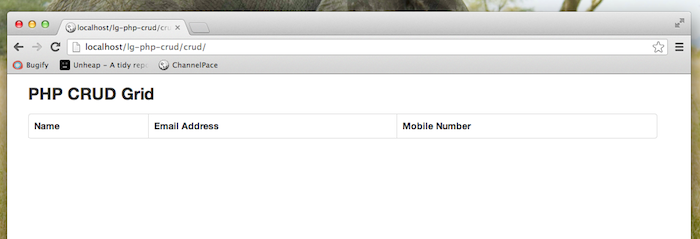Contoh Program Oop Php Tutorial

In my previous tutorial i have explained that how to use in, and now in this tutorial I'm going to explain a script using PDO and OOP, we already have a tutorial on this topic but that was for beginners with MySQL, and this one is with PDO and OOP, as PDO is improved extension it's must be used, i have used here new PHP 5.5 Password Hashing API function that creates strong password, for hashing password you have to use PHP 5.5 latest version of PHP and we will also see how to hash passsword using this functions and maintaining a user sessions using OOP so let's see the tutorial. Some questions i am wondering about, why start the user class on every page since you are including the db_config on every page, and at the same time you will be defining only one instance of a class.

I thought the benefits of OOP is that you can have many instances of the same class. Like you can have $user_register = new user and $user_profile = new user. Two different instances of using the user class in two scenarios. Also why not create a database class when you are doing OOP? Have methods like connect(), query(), execute(). For me this seems like procedural programming mixed in with OOP.
Download Contoh Program Oop Php Book. There are two ways we can do code reuse either by implementation of inheritance (IS-A. Good Reader Crack Keygen Autocad. This section covers C programming examples on File Handling. PHP is a server scripting language, and a powerful tool for making dynamic and interactive Web pages. This is a place where the users can find the solution to create their own web service by using C sharp and.NET framework. This tutorial offers simple steps to the.
Thank you, this is the best explained script I've seen in a long time. You're a good teacher:) If you can, please help me with one small issue. The email is correctly sent, and the link (to activate account) looks like this: mydomain.com/verify.php?id=MTUz&code=c74f01c3ea3edf807b21fc4ea28a41cb I have checked that user does indeed exist in tbl_users and the above CODE is the same. I think the issue is with the ID:?id=MTUz, because when you click the link, it says sorry! Account not found. Please help when you can.
Kind regards. Hi, Thanks for this tutorial it's just what I was looking for. Most others are really out of date and I find your approach very simple and easy to understand. I especially like how you explain each block of code (great for newbies like me!). Just one thing I noticed - when I downloaded your script files - in class. How To Install Wii Mod Batch File. user.php (line 70ish) the function is called `public function doLogout()`. However here on the tutorial page it's called `public function logout()`. This had me puzzled for a while as I was following your tutorial here and had half the code written, I then decided to download the rest of the files, and my files didn't match!
My logour wouldn't work and kept throwing an unknown function error. No big deal, if anybody else is reading this make sure ALL your functions are named the same or you will have issues like I did Thanks again, can't wait for your other tutorials:). This looks great! It worked fine for me, but I have a concern: It seems there are additional measures you could/should take to prevent hacking, such as via SQL injection. I see you're using DBO::prepare, which helps to prevent SQL injection, according to some references [1][2] this may not be enough.
In [2], author recommends also setting the following attribute: $pdo->setAttribute(PDO::ATTR_EMULATE_PREPARES, false); In your code, you use: $this->conn->setAttribute(PDO::ATTR_ERRMODE, PDO::ERRMODE_EXCEPTION); What measures are you taking (besides DBO::prepare) to prevent hacking? [1] [2] http://stackoverflow.com/questions/134099/are-pdo-prepared-statements-sufficient-to-prevent-sql-injection. This looks great! It worked fine for me, but I have a concern: It seems there are additional measures you could/should take to prevent hacking, such as via SQL injection. I see you're using DBO::prepare, which helps to prevent SQL injection, according to some references [1][2] this may not be enough.
In [2], author recommends also setting the following attribute: $pdo->setAttribute(PDO::ATTR_EMULATE_PREPARES, false); In your code, you use: $this->conn->setAttribute(PDO::ATTR_ERRMODE, PDO::ERRMODE_EXCEPTION); What measures are you taking (besides DBO::prepare) to prevent hacking? [1] [2] http://stackoverflow.com/questions/134099/are-pdo-prepared-statements-sufficient-to-prevent-sql-injection.